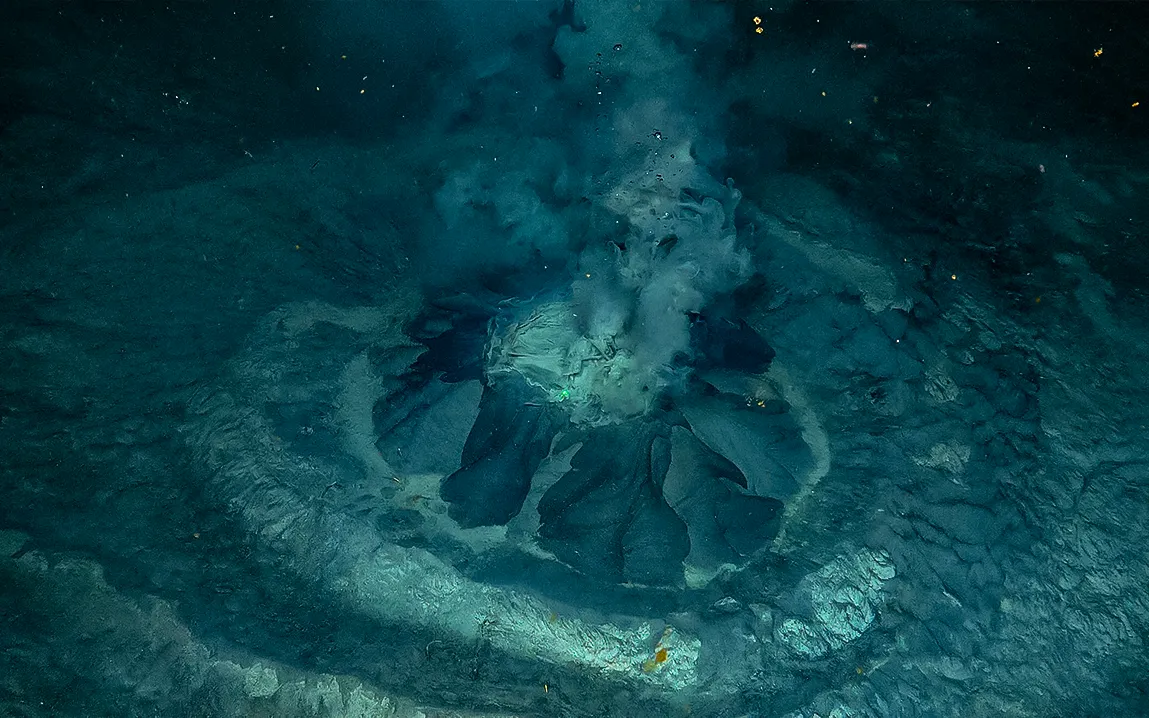A few meters beneath the near-freezing waters of the Barents Sea lies an exceptionally unusual submarine volcano-a mud volcano, aptly named Borealis Mud Volcano. Discovered in 2023 by researchers with UiT The Arctic University of Norway, this submarine volcano would be transformed into a rare oasis for numerous marine species, many of them considered vulnerable or threatened.
The Geological Marvel
The Borealis Mud Volcano is situated approximately 130 nautical miles south of Bear Island, buried beneath more than 1,300 feet of water. It rests within a crater almost 1,000 feet wide, and the volcano itself is about 23 feet in width and 8 feet in height. This mud volcano is different from the other regular volcanoes, spewing out lava; instead, it continuously discharges methane-rich fluids, forming a unique habitat on an otherwise cold and dark seafloor.
Methane Emissions and Ecological Impact
A research team aboard the vessel Kronprins Haakon undertook an expedition last May 2024 using a remotely operated vehicle, Aurora, to make highly detailed observations of the volcano. They found that the seafloor in its surroundings had extensive carbonate deposits, presumably marking the surface expression of long-term diffuse methane migration. These carbonates, with shelter and food associated with them, are very important in sustaining the local populations of fish. They were joined by large schools of commercially valuable species like saithe and various demersal species, such as spotted wolffish, cod, four-bearded rockling, and redfish, congregating on the irregular carbonate formations.
A Haven for Vulnerable Species
The Borealis Mud Volcano represents a natural shelter for several marine species in the Barents Sea. Most importantly, redfish-a red-listed species due to its vulnerable status-find their home within this habitat. The warm temperatures and high availability of food sources around the volcano create an oasis where different species can thrive and flourish. Ecosystems like the Borealis Mud Volcano should be preserved in order to maintain biodiversity and understand interactions between geology, geochemistry, and biology in marine environments.
Implications for Conservation and Industry
The discovery of the Borealis Mud Volcano has brought to light the need for protection regarding deep-sea habitats that are one of a kind. Norway has committed to the 30×30 target, which protects 30% of land and sea by 2030. The protection of these areas, like the Borealis Mud Volcano, is quite crucial in view of marine biodiversity and understanding the complex interaction between geological processes and marine ecosystems. This understanding is particularly important given the fact that the Arctic seabed plays an important role regarding oil and gas extraction activities and the forthcoming deep-sea mining industry.
A Call for Further Research
The discoveries of the Borealis Mud Volcano draw out the importance of further research that must be continued in order to investigate complex interplay between geological processes and marine ecosystems. It is of great essence as it keeps informing the efforts for conservation, along with sustainable management of these special kinds of habitats. These new findings represent the strength of international collaboration and how that can enable a deeper understanding of the oceans.
The Borealis Mud Volcano is one of those breathtaking oceanic wonders, still hidden from most human perception. Specific conditions there allow a wide variety of life to proliferate in this marine habitat and give very important insights into the complex relationships at work in deep-sea ecosystems. As we learn more and more about such remote habitats, it becomes obvious that each one of them contributes in its own particular way to the overall health and biodiversity of our global oceans.



